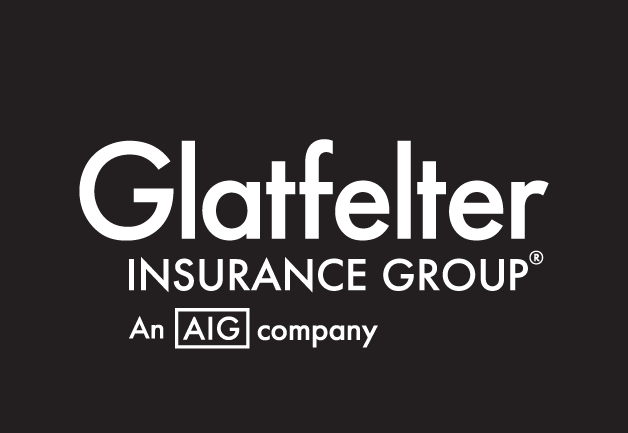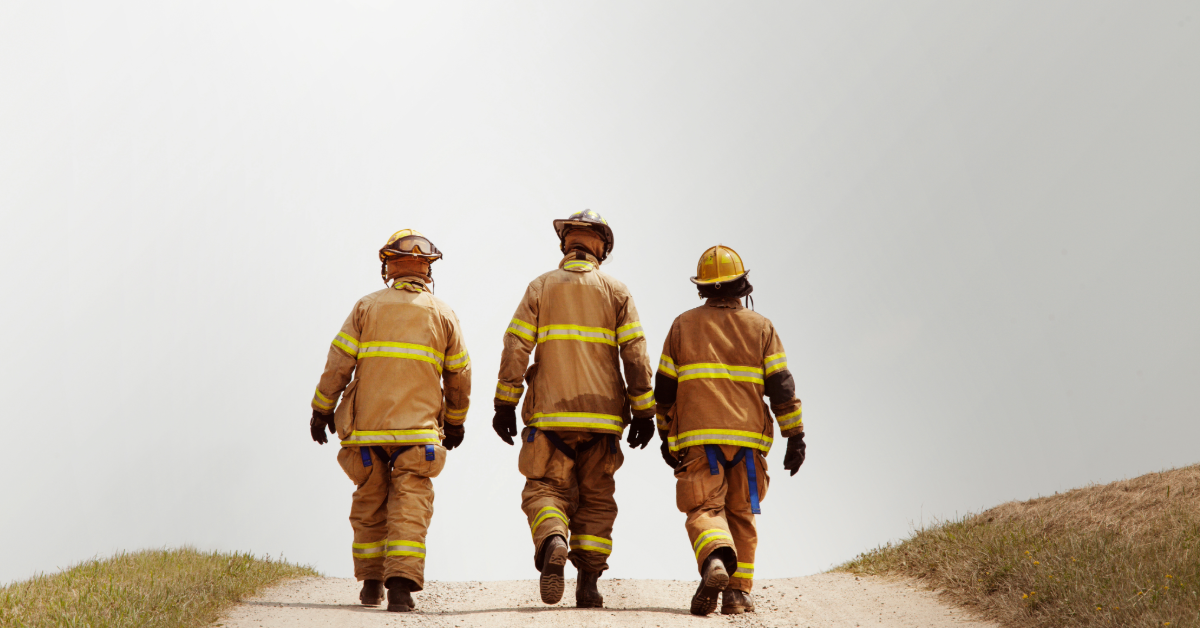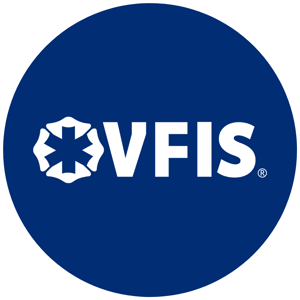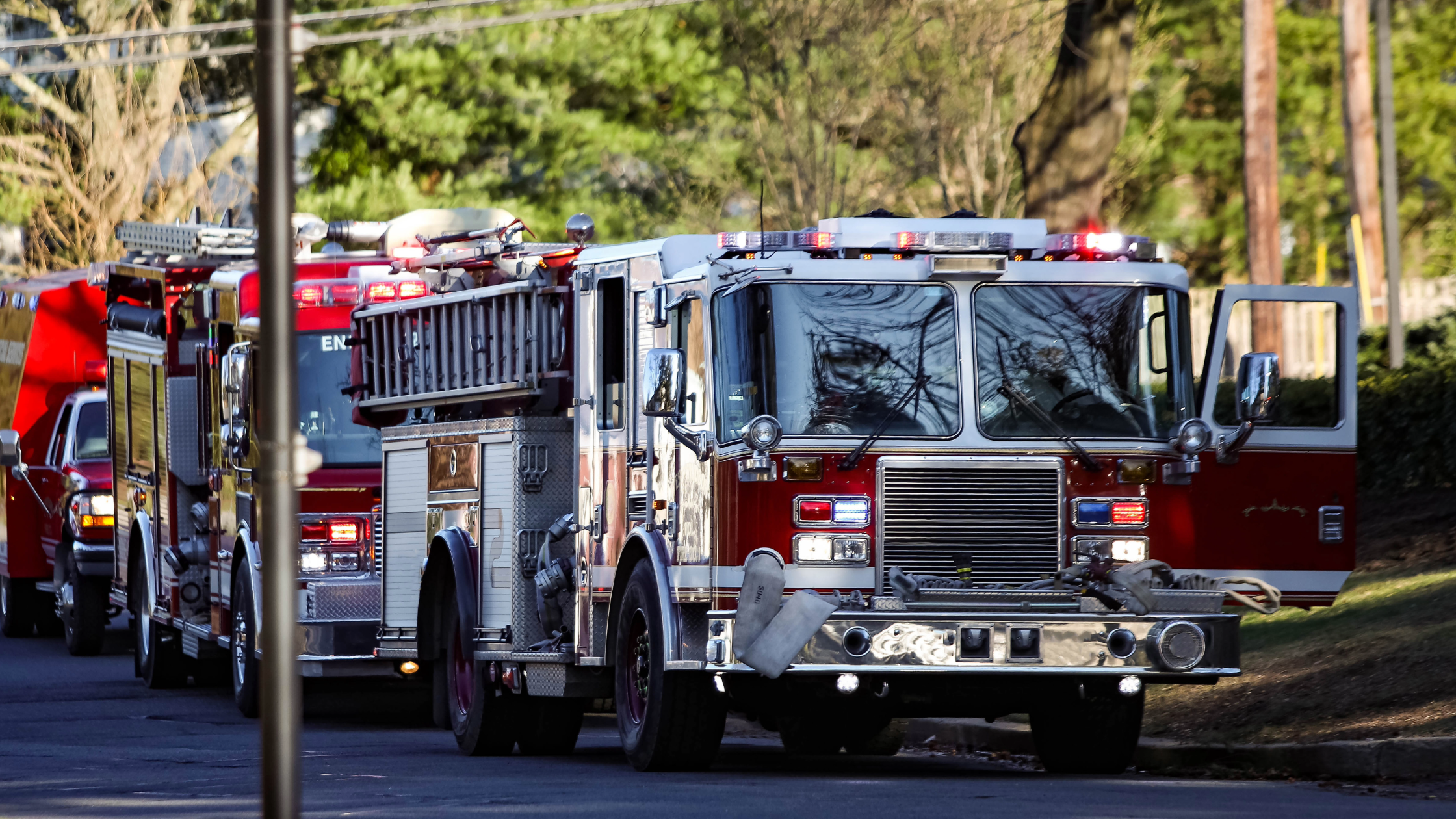You witness trauma, endure stress and carry burdens that few can comprehend. And while those dark moments are often glamorized in headlines, they leave invisible wounds that can lead to silent battles.
A CUMULATION OF STRESSORS
While any job contains stressors, the combined impact of the unique challenges that emergency services personnel face cannot be ignored. Given the nature of the job, first responders are likely to experience a broad range of potentially damaging consequences related to:
- Being repeatedly called to scenes with direct and indirect exposure to death, grief, injury, pain, loss and threats to physical safety.
- The physical demands of the job, with the Bureau of Labor Statistics reporting that firefighting is the most physically demanding job in the country.
- Long and odd hours, potentially leading to poor sleep and fatigue.
- Relationship struggles, including a lack of understanding of job demands or missing out on valuable time with loved ones.
- Other potential “side effects” like negative interactions with the public, media crises and administrative woes.
UNDERSTANDING BEHAVIORAL HEALTH
Behavioral health encompasses mental health, substance use disorders and stressors, as well as the physical symptoms that arise from those risks, says the American Medical Association.
The Substance Abuse and Mental Health Services Administration (SAMHSA) estimates that 30% of first responders develop behavioral health conditions, including depression, post-traumatic stress disorder (PTSD) and suicide, compared to about 20% of the general population.
SUICIDE RATES
There are several occupations that appear to be at a higher risk for suicide, including first responders, says the CDC. In fact, they report that firefighters are more likely to die by suicide than in the line of duty, and EMS providers are 1.39 times more likely to die by suicide than the general public.
While these statistics alone are staggering, it’s noted that the number of suicides and mental health issues among first responders is likely underreported due to the perceived stigma.
According to the American Foundation for Suicide Prevention (AFSP), there is no single cause for suicide. However, conditions like depression, anxiety and substance abuse (especially when they’ve gone unaddressed or untreated), as well as exposure to prolonged stress and stressful life events, do increase the risk of suicide.
SILENCE ISN’T THE ANSWER
While you can’t take away some of the daily risk exposures that come with the job, you can raise awareness about what those experiences could lead to, be proactive about behavioral health, and create a culture that encourages seeking assistance.
- Education: Look for regular opportunities to teach your crew about their behavioral health risks. For example, assign your members the Behavioral Health Concerns course on VFIS University, which is free for all VFIS clients and gives an overview of behavioral health, associated concerns, appropriate actions and assistance options.
- Prevention: Consider instituting a peer support program and other proactive measures, like VFIS’ Member Family Assistance Program, (learn more below)to help your team maintain productivity, health and wellness, and resolve personal and work-related issues, as well as offer support to them during difficult times.
- Leadership: Your resources, tools and policies are only as effective as you make them—to make a true difference, leaders should make behavioral health a top priority, pay attention to their members’ wellbeing and make talking about mental and behavioral health an expectation.
START BY RECOGNIZING SAFETY STAND DOWN FROM JUNE 15-21, 2025
Safety Stand Down is an annual event that encourages fire and emergency service organizations to suspend all non-emergency activities during the third week of June, and take that time to focus on safety.
This year’s theme is “Break the Stigma: Behavioral Health RESET,” which could serve as a great opportunity for your organization to launch your latest behavioral health initiative.
The week will focus on the daily themes of Recognize, Educate, Strategies, Empower and Training (“RESET”), and seeks to help departments better understand behavioral health challenges, how they impact every aspect of your operations and how to better support those who are struggling.
You can learn more about this joint initiative by the NFPA, IAFF, FDSOA, NVFC and IAFC and get planning and additional safety resources at SafetyStandDown.org.
ABOUT VFIS ACCIDENT & SICKNESS
Your team faces unique health, safety and wellness risks while they serve and protect others—and those risks could have significant and devastating outcomes.
While some organizations believe that Workers’ Comp will adequately protect their members during these times—unfortunately, many learn the hard way that this isn’t always the case.
VFIS Accident & Sickness (A&S) is designed to be there for first responders and their families during moments like these, with financial benefits for members who are injured or experience an illness while performing the normal duties of their organization.
Member Family Assistance Program (MFAP) is also made available to A&S clients, and provides comprehensive and preventative approaches to health, wellbeing and productivity, including confidential counseling services and lifestyle coaching offered through trained professionals who are experienced in counseling emergency service personnel.
Ask your local insurance agent or broker about VFIS A&S to learn more.
DISCLAIMER
The information contained in this blog post is intended for educational purposes only and is not intended to replace expert advice in connection with the topics presented. Glatfelter specifically disclaims any liability for any act or omission by any person or entity in connection with the preparation, use or implementation of plans, principles, concepts or information contained in this publication.
Glatfelter does not make any representation or warranty, expressed or implied, with respect to the results obtained by the use, adherence or implementation of the material contained in this publication. The implementation of the plans, principles, concepts or materials contained in this publication is not a guarantee that you will achieve a certain desired result. It is strongly recommended that you consult with a professional advisor, architect or other expert prior to the implementation of plans, principles, concepts or materials contained in this publication.
This blog post may contain the content of third parties and links to third party websites. Third party content and websites are owned and operated by an independent party over which Glatfelter has no control. Glatfelter makes no representation, warranty, or guarantee as to the accuracy, completeness, timeliness or reliability of any third party content. References to third party services, processes, products, or other information does not constitute or imply any endorsement, sponsorship or recommendation by Glatfelter, unless expressly stated otherwise.
Related posts
We asked 10 members of our VFIS Team to name one auto-related risk that they believe is underdiscussed in fire and EMS agencies. Here’s what they said.
Most volunteer fire departments rely heavily on POVs, but there are inherent risks you should know.
Establish a Emergency Vehicle Operations Program that includes driver/operator requirements to help ensure your vehicles are in the right hands.









Submit a Comment